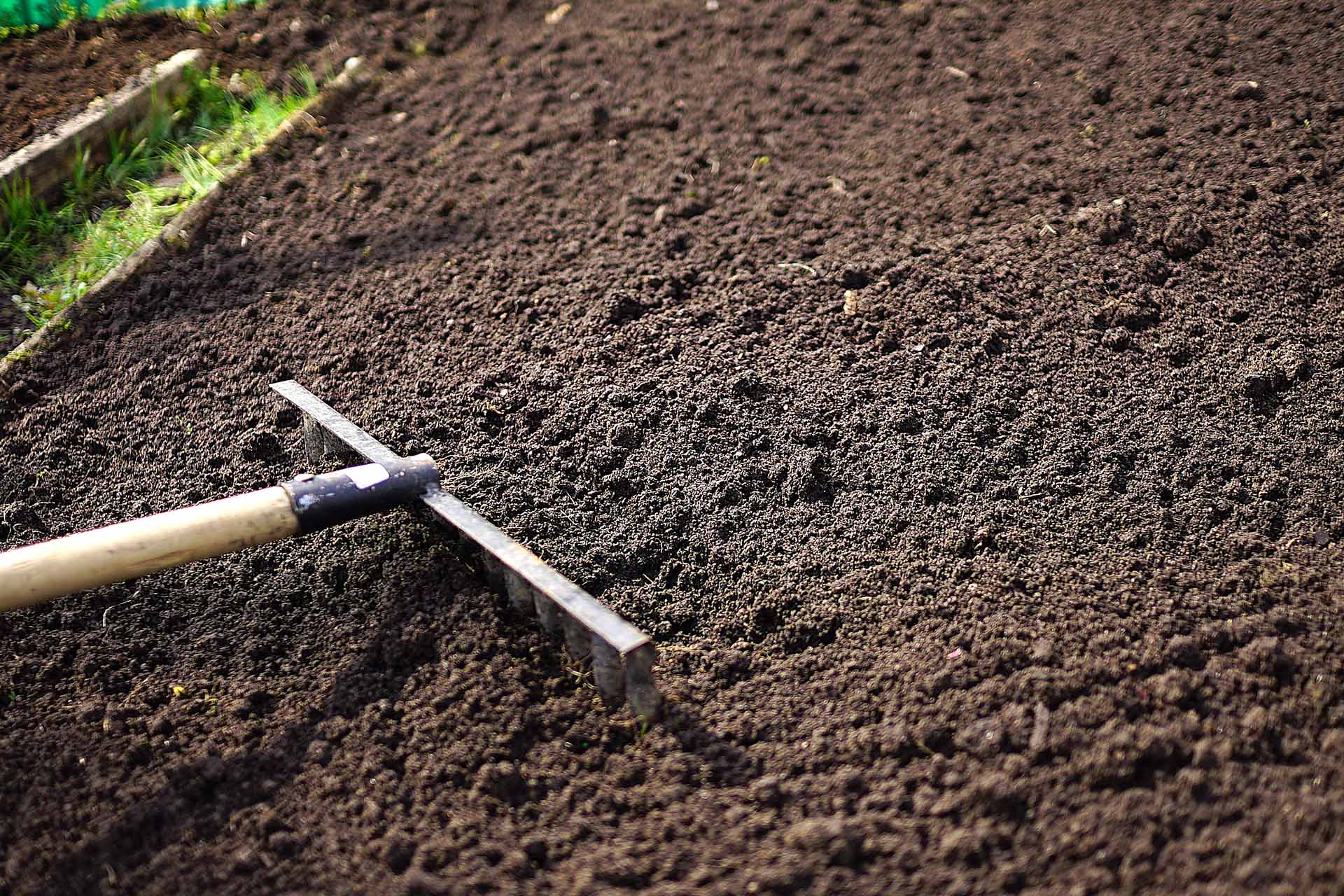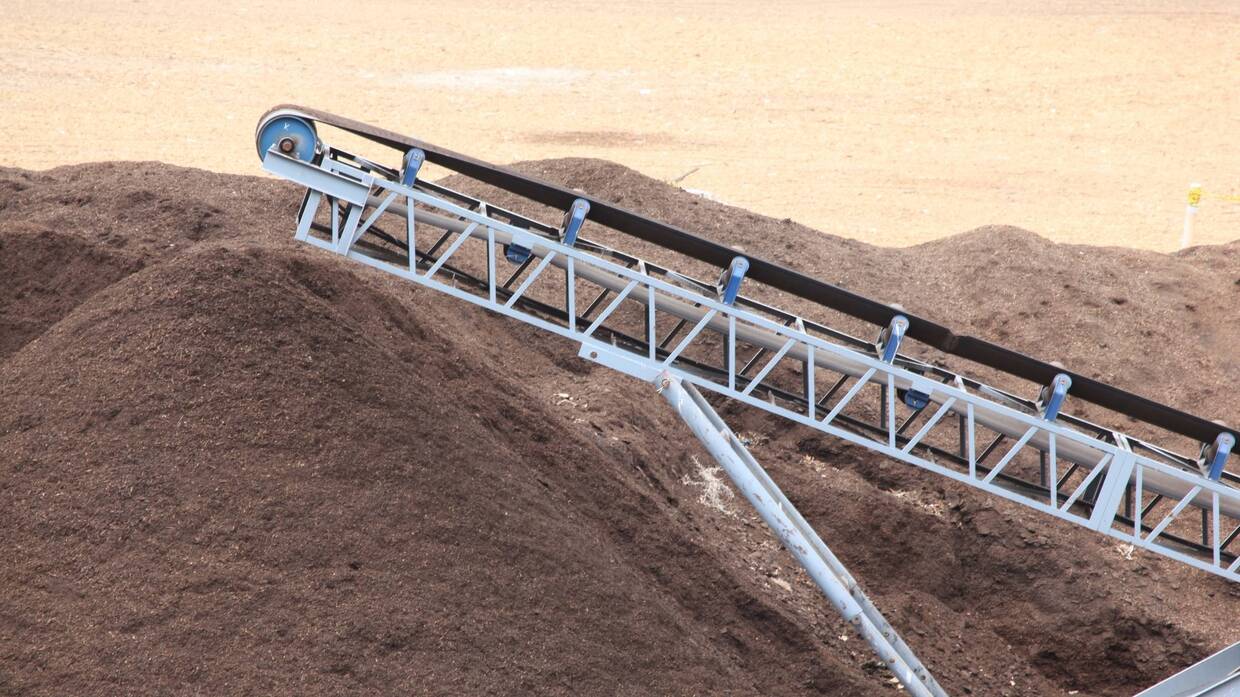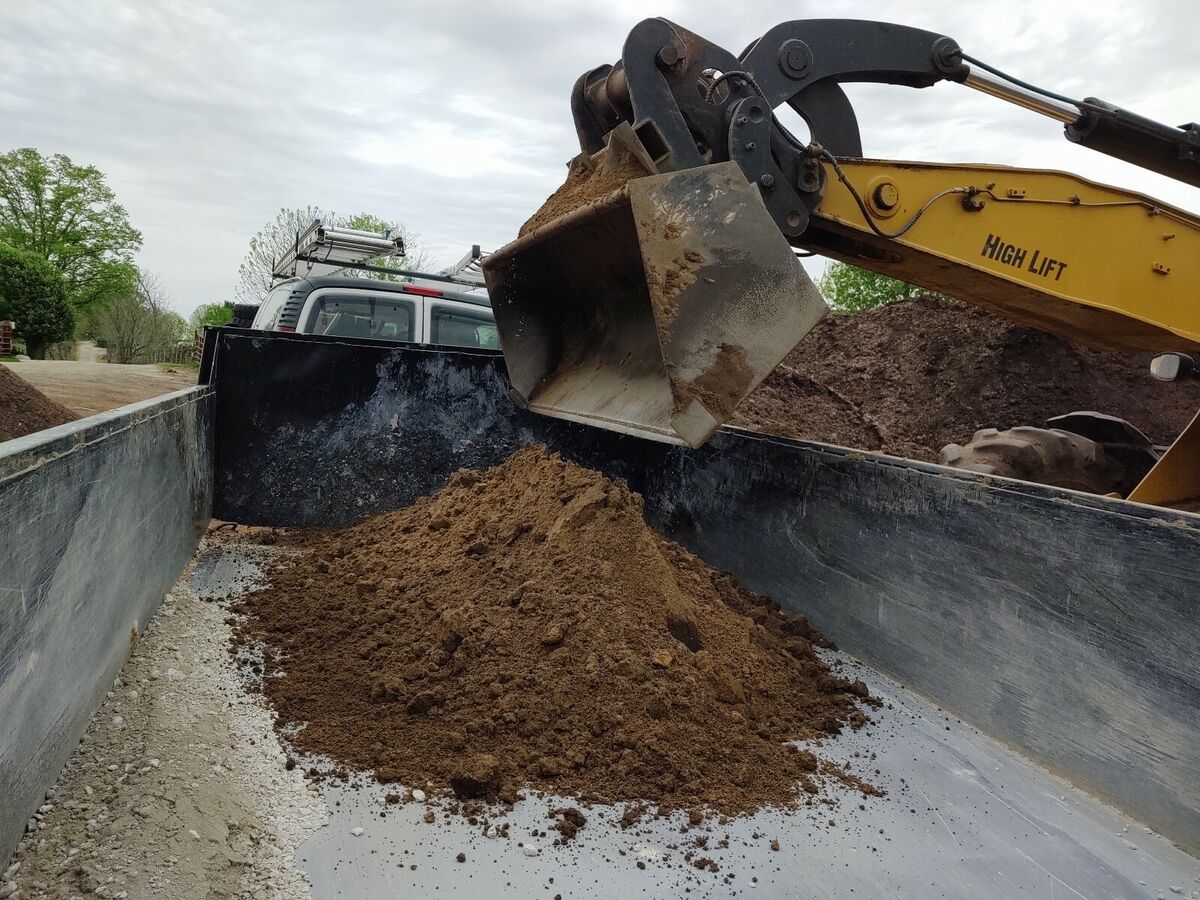Home>Gardening Basics>Understanding Soil>How Does Selective Cutting Of Forests Conserve Topsoil


Understanding Soil
How Does Selective Cutting Of Forests Conserve Topsoil
Modified: January 22, 2024
Learn how understanding soil plays a crucial role in the conservation of topsoil through selective cutting of forests. Gain insights into the impact of this practice on the sustainability of our natural ecosystems.
(Many of the links in this article redirect to a specific reviewed product. Your purchase of these products through affiliate links helps to generate commission for Chicagolandgardening.com, at no extra cost. Learn more)
Table of Contents
- Introduction
- Definition of Selective Cutting
- Importance of Topsoil Conservation
- Effects of Selective Cutting on Topsoil
- Techniques Used to Conserve Topsoil during Selective Cutting
- Benefits of Topsoil Conservation through Selective Cutting
- Challenges and Limitations of Topsoil Conservation through Selective Cutting
- Conclusion
Introduction
Welcome to our comprehensive guide on the topic of selective cutting and its role in conserving topsoil. The earth’s soil is a precious and finite resource that plays a crucial role in sustaining life and supporting ecosystems. As human activities continue to impact our planet, it has become increasingly important to find sustainable and responsible ways to manage our natural resources.
Selective cutting, also known as selective logging or selective harvesting, is a forestry practice that involves the careful and strategic removal of certain trees from a forest while leaving others intact. This method is employed to maintain the ecological balance of the forest and to maximize the long-term benefits and health of the overall ecosystem.
Topsoil, the uppermost layer of soil, is a vital component of our ecosystems. It provides essential nutrients to plants, helps retain water, and supports the growth of a diverse range of organisms. However, unsustainable logging practices can significantly impact the quality and stability of topsoil, leading to erosion, nutrient depletion, and reduced biodiversity.
In this article, we will explore the importance of topsoil conservation, the effects of selective cutting on topsoil, and the techniques used to mitigate these effects. We will also discuss the benefits and challenges of applying selective cutting as a means of topsoil conservation. By the end of this guide, you will have a better understanding of how selective cutting can be a valuable tool in maintaining the health and productivity of our soil.
Definition of Selective Cutting
Selective cutting, also referred to as selective logging or selective harvesting, is a forestry practice that involves the careful and deliberate removal of specific trees from a forest while leaving other trees untouched. Unlike clear-cutting, which involves the complete removal of all trees in a designated area, selective cutting focuses on extracting only a portion of the trees based on predetermined criteria.
The criteria for selecting trees to be harvested may vary depending on the specific goals and regulations of the forestry management plan. In many cases, trees that are diseased, damaged, or nearing the end of their natural life cycle are targeted for removal. Additionally, trees that may hinder the growth or development of more desirable tree species may also be selected for cutting.
Selective cutting can be further classified into different techniques, such as single-tree selection and group selection. Single-tree selection involves the removal of individual trees scattered throughout the forest, while group selection involves the removal of small clusters or groups of trees. These techniques aim to maintain the structural integrity and ecological diversity of the forest by emulating natural disturbance patterns.
It is important to note that selective cutting is not a one-time event but rather an ongoing process that requires careful monitoring and adaptive management strategies. Forest managers and loggers must constantly assess the health of the forest and make informed decisions to ensure the long-term sustainability and regeneration of tree species.
The implementation of selective cutting requires skilled professionals who can accurately identify and target specific trees for harvesting. It is crucial to ensure that logging practices comply with forestry regulations and guidelines to minimize the negative impacts on the ecosystem and surrounding communities.
Overall, selective cutting is a forestry practice that aims to strike a balance between the extraction of timber resources and the preservation of ecosystem functionality and biodiversity. Through careful tree selection and responsible harvesting techniques, selective cutting can contribute to sustainable forest management and the conservation of topsoil.
Importance of Topsoil Conservation
Topsoil is a vital component of our ecosystems and plays a crucial role in supporting plant growth, retaining water, and sustaining a diverse range of organisms. It is the uppermost layer of soil, rich in organic matter, nutrients, and microorganisms. Therefore, the conservation of topsoil is of utmost importance to maintain the health and productivity of our land. Here are some key reasons why topsoil conservation is essential:
- Sustaining Agriculture: Topsoil is the foundation of agricultural productivity. It provides the necessary nutrients and water retention capacity for crop plants to thrive. By conserving topsoil, we can ensure the sustainability of food production and maintain food security for future generations.
- Preventing Erosion: Topsoil erosion is a significant concern, especially in areas with intensive farming or deforestation. When topsoil is eroded, it results in the loss of essential nutrients and reduces soil fertility. Conservation practices like selective cutting help to protect topsoil, minimizing the risks of erosion.
- Promoting Biodiversity: Topsoil provides a habitat for a vast array of microorganisms, insects, and plant roots. By conserving topsoil, we preserve biodiversity and create a favorable environment for various species to thrive. This, in turn, contributes to the overall health and resilience of ecosystems.
- Improving Water Quality: Topsoil acts as a natural filter, trapping and retaining pollutants before they reach groundwater or nearby water bodies. By conserving topsoil, we can help prevent contamination of water sources and maintain the quality of freshwater ecosystems.
- Enhancing Carbon Sequestration: Topsoil plays a vital role in carbon storage. Organic matter in the topsoil absorbs and retains carbon dioxide, mitigating the impact of greenhouse gases and helping to combat climate change. Conserving topsoil ensures the preservation of this valuable carbon sink.
By recognizing and prioritizing the importance of topsoil conservation, we can take significant steps towards sustainable land management practices. Through selective cutting and other techniques, we can protect and preserve the integrity of topsoil, ensuring the long-term productivity of our land and the health of our ecosystems.
Effects of Selective Cutting on Topsoil
Selective cutting, when improperly executed, can have various impacts on the quality and stability of topsoil. While it is a more sustainable logging practice compared to clear-cutting, it still has its potential drawbacks. Understanding the effects of selective cutting on topsoil is crucial for implementing appropriate conservation measures. Here are some key effects of selective cutting on topsoil:
- Increased Soil Erosion: Selective cutting disrupts the natural forest canopy, removing certain trees and leaving gaps in the vegetation. This alteration in the forest structure can lead to an increase in wind and water erosion, as there are fewer trees to provide protection and stabilize the soil. The loss of topsoil through erosion can result in nutrient depletion and reduced soil fertility.
- Altered Microbial Activity: Topsoil is teeming with microorganisms that play a vital role in nutrient cycling and organic matter decomposition. Selective cutting can disturb the delicate balance of the soil ecosystem, affecting microbial communities and their functions. Alterations in microbial activity can lead to imbalances in nutrient availability and organic matter decomposition rates.
- Changes in Soil Moisture: The removal of certain tree species through selective cutting can alter the water balance in the forest ecosystem. Some tree species have deep root systems that help to draw water from deeper soil layers, while others have a shallow root system that relies on surface-level moisture. Changes in tree composition can affect the distribution and availability of soil moisture, potentially impacting the water-holding capacity of topsoil.
- Loss of Organic Matter: Selective cutting can result in the removal of trees that contribute to organic matter accumulation on the forest floor. Organic matter is crucial for topsoil fertility, as it provides essential nutrients and improves soil structure. The loss of organic matter through selective cutting can lead to a decrease in soil fertility and degrade the overall quality of topsoil.
- Reduction in Biodiversity: Selective cutting, if not properly regulated, can lead to a loss of biodiversity in the forest ecosystem. Removing specific tree species can disrupt the habitat and food sources for various organisms, including insects, birds, and mammals. This loss of biodiversity can have cascading effects on the nutrient cycling processes in the topsoil.
It is important to note that the severity of these effects can vary depending on the specific forest ecosystem, the intensity of selective cutting, and the implementation of conservation practices. By understanding these potential impacts, forest managers and loggers can take proactive steps to mitigate the negative effects and implement strategies that promote the conservation of topsoil in selective cutting operations.
Techniques Used to Conserve Topsoil during Selective Cutting
Conserving topsoil during selective cutting operations is essential to maintain the health and productivity of the forest ecosystem. To minimize the potential negative impacts on topsoil, a range of techniques and best practices can be employed. These techniques aim to promote soil stability, reduce erosion, and preserve the overall quality of the topsoil. Here are some commonly used techniques for topsoil conservation during selective cutting:
- Implementing Buffer Zones: Buffer zones are designated areas around water bodies, slopes, or sensitive ecosystems where no logging activities occur. These zones act as a protective barrier to prevent sediment runoff into water bodies and maintain soil stability.
- Maintaining Residual Trees and Understory: Leaving a certain number of healthy trees standing during harvesting helps to minimize soil disturbance and protect the topsoil from erosion. Retaining the understory vegetation also provides additional groundcover to stabilize the soil and reduce the impacts of wind and water erosion.
- Utilizing Low-Impact Harvesting Equipment: Using logging equipment specifically designed for selective cutting, such as low-ground-pressure vehicles and low-impact skidders, can minimize soil compaction and disturbance during the logging process. This helps to preserve the structure and integrity of the topsoil.
- Practicing Correct Logging Techniques: Employing proper felling and extraction techniques can significantly reduce soil disturbance during the selective cutting process. Techniques such as directional felling, which ensures trees fall in a predetermined direction, can minimize unnecessary soil disruption.
- Implementing Site-Specific Best Management Practices (BMPs): BMPs are practices tailored to the specific environmental conditions of a logging site. They may include measures like constructing skid trails, installing erosion control structures, or managing logging debris to reduce erosion and retain topsoil on site.
- Maintaining Soil Organic Matter: Retaining organic matter on the forest floor is vital for topsoil conservation. By leaving logging debris, such as branches and leaves, on the forest floor, organic matter can continue to contribute to the nutrient cycling processes and improve soil fertility.
- Revegetation and Reforestation: Following selective cutting, implementing reforestation efforts by replanting harvested areas or allowing natural regeneration can facilitate the recovery of the forest ecosystem. The establishment of new tree cover helps to stabilize the soil, prevent erosion, and promote the accumulation of organic matter.
It is important for forest managers and loggers to be knowledgeable about these techniques and incorporate them into their logging operations. By implementing these measures, topsoil conservation can be prioritized, allowing for more sustainable and responsible selective cutting practices.
Benefits of Topsoil Conservation through Selective Cutting
Topsoil conservation through selective cutting offers numerous benefits for both the ecosystem and the stakeholders involved in forestry management. When implemented properly, selective cutting can help to maintain the health and productivity of the topsoil while promoting sustainable land management practices. Here are some key benefits of topsoil conservation through selective cutting:
- Sustainable Timber Harvesting: Selective cutting allows for the extraction of timber resources while minimizing the negative ecological impacts associated with clear-cutting. By carefully selecting which trees to remove, the overall structure and function of the forest ecosystem can be maintained, contributing to long-term sustainability.
- Preservation of Biodiversity: By targeting specific trees for removal and leaving other trees untouched, selective cutting helps to maintain the biodiversity of the forest ecosystem. This approach allows for the preservation of habitat and food sources for various plant and animal species, promoting a healthy and resilient ecosystem.
- Enhanced Regeneration and Succession: Selective cutting can encourage natural regeneration and succession processes in the forest. By opening the forest canopy and providing opportunities for sunlight to reach the forest floor, selective cutting creates favorable conditions for the growth of understory vegetation and the establishment of new tree species.
- Improved Water Quality and Quantity: Selective cutting, when coupled with appropriate buffer zones and other conservation measures, helps to protect water quality and preserve water quantity. By reducing soil erosion and filtering out sediment, selective cutting can prevent the contamination of water bodies and maintain consistent water flow in streams and rivers.
- Preservation of Soil Fertility: Topsoil conservation through selective cutting helps to retain soil organic matter and nutrients, promoting the long-term fertility of the soil. By implementing techniques that minimize soil disturbance and preserve the integrity of the topsoil, selective cutting supports the growth and productivity of future tree generations.
- Social and Economic Benefits: Selective cutting practices can provide economic benefits to local communities and stakeholders involved in forestry management. By promoting sustainable timber harvesting practices, selective cutting allows for continued economic activities while preserving the long-term availability of forest resources.
- Carbon Sequestration and Climate Mitigation: Forests play a significant role in mitigating climate change through carbon sequestration. Selective cutting, by preserving the overall health and productivity of the forest, ensures the continued capacity of the ecosystem to absorb and store carbon dioxide, contributing to climate change mitigation efforts.
By recognizing and capitalizing on these benefits, topsoil conservation through selective cutting can be a valuable tool for sustainable forest management. The careful implementation of selective cutting practices, coupled with other conservation measures, allows for the balanced utilization of forest resources while preserving the integrity and functionality of the topsoil.
Challenges and Limitations of Topsoil Conservation through Selective Cutting
While selective cutting can be an effective tool for topsoil conservation, there are several challenges and limitations that need to be considered. The implementation of selective cutting practices requires careful planning, skilled management, and continuous monitoring to ensure their effectiveness. Here are some key challenges and limitations of topsoil conservation through selective cutting:
- Operational Complexity: Selective cutting requires careful planning and execution to identify the right trees for removal while preserving the health and integrity of the forest ecosystem. It requires skilled professionals who can accurately assess tree health, growth patterns, and ecological interactions, which can be challenging and time-consuming.
- Fragmentation and Habitat Loss: Selective cutting, if not properly planned, can result in fragmentation of the forest landscape, dividing habitats and disrupting ecological connectivity. This fragmentation can affect the movement of wildlife and lead to the loss of specialized habitats, potentially impacting the biodiversity and long-term ecosystem health.
- Invasive Species and Pest Management: Selective cutting can create conditions that facilitate the establishment and spread of invasive species. The disturbance caused by logging activities can provide opportunities for invasive plants and pests to invade the forest ecosystem, potentially outcompeting native species and causing ecological imbalances.
- Stakeholder Management: Balancing the interests and needs of various stakeholders, including loggers, local communities, and environmental groups, can be a challenge. Engaging stakeholders and ensuring their active participation in the planning and decision-making processes can help address potential conflicts and ensure the success of topsoil conservation efforts.
- Risk of Soil Erosion: Although selective cutting aims to minimize soil disturbance, there is still a risk of soil erosion, especially if conservation practices are not implemented effectively. Steep slopes, poor soil conditions, or extreme weather events can increase the vulnerability of the topsoil to erosion, which may negatively impact soil fertility and water quality.
- Long-Term Monitoring and Adaptation: Topsoil conservation through selective cutting requires ongoing monitoring and adaptive management strategies to ensure its long-term effectiveness. Regular assessments of the soil conditions, vegetation dynamics, and ecosystem health are necessary to identify any potential issues and adjust management practices accordingly.
- Limited Suitable Application: Selective cutting may not be suitable or practical in all forest ecosystems. Some forests may require different management approaches, such as clear-cutting for specific purposes, or may have constraints that limit the application of selective cutting, such as legal regulations or economic constraints.
By acknowledging these challenges and limitations, and implementing appropriate strategies to address them, topsoil conservation through selective cutting can be more effective and sustainable. It is crucial to continually improve management techniques, engage stakeholders, and adapt practices to ensure the long-term preservation of topsoil and the overall health of forest ecosystems.
Conclusion
Selective cutting plays a crucial role in the conservation of topsoil, ensuring the long-term health and productivity of forest ecosystems. By carefully selecting and removing specific trees while leaving others intact, the integrity of the topsoil can be preserved, minimizing soil erosion and maintaining nutrient-rich soil. Through the implementation of various techniques such as buffer zones, low-impact harvesting equipment, and site-specific best management practices, topsoil conservation can be prioritized during selective cutting operations.
The importance of topsoil conservation cannot be overstated. It sustains agriculture by providing essential nutrients for crop growth, improves water quality, preserves biodiversity, enhances carbon sequestration, and supports the overall health of ecosystems. By recognizing the challenges and limitations associated with selective cutting, such as operational complexity, fragmentation of habitat, and stakeholder management, we can work towards mitigating these challenges and improving the effectiveness of topsoil conservation efforts.
It is crucial for forest managers, loggers, and other stakeholders to prioritize the implementation of best practices and continuous monitoring to ensure the success of topsoil conservation through selective cutting. Engaging local communities and stakeholders in the decision-making process, promoting sustainable timber harvesting, and adopting adaptive management strategies are key elements to enhance the long-term effectiveness of topsoil conservation.
In conclusion, topsoil conservation through selective cutting is a valuable approach that allows us to strike a balance between utilizing forest resources and preserving the health and productivity of the soil. By implementing responsible and sustainable logging practices, we can ensure the preservation of topsoil, protect biodiversity, and support the long-term sustainability of our forests for generations to come.






